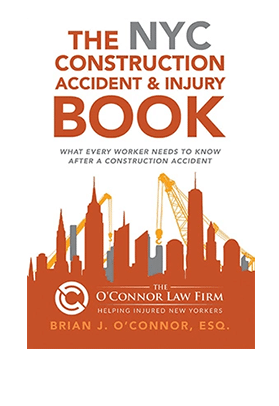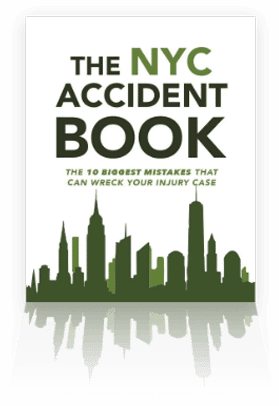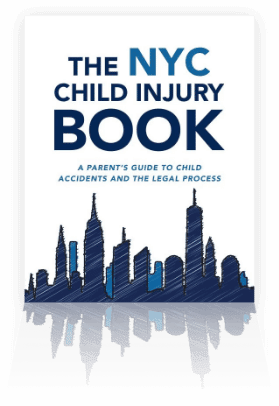New York City Sidewalk Accident Lawyer Helping You Pursue Justce
With almost 13,000 miles of sidewalk throughout the five boroughs of New York City and over 8.5 million residents, sidewalk accidents are bound to happen. When sidewalks are cracked, raised, uneven or have other defects, they become tripping hazards that can cause serious injuries. The City of New York and some private property owners have a responsibility to maintain sidewalks in a reasonably safe condition. If you have been injured in a sidewalk accident, it is important that you speak with an experienced New York City sidewalk accident lawyer as soon as possible.
As a former trial lawyer for the New York City Law Department, Brian J. O’Connor possesses in-depth knowledge of the New York Sidewalk Law, including the short notice period applicable to municipal entities. We can answer your questions and provide the guidance you need when an accident has turned your life upside down. Call us at 212-566-4868 or 718-948-3500 and let us help you today.
What Makes A Sidewalk Dangerous?

According to Administrative Code §19-152 (Duties and Obligations of Property Owners with respect to Sidewalk and Lots), all property owners are required to repair sidewalks adjacent to their properties to ensure they are in a reasonably safe condition and defines when a sidewalk contains such a “substantial defect” that it requires repair. These defects include:
- One or more sidewalk flags is missing;
- Cracked sidewalk flags in which one or more pieces may be loosened;
- A trip hazard greater than one half inch;
- Improper slope;
- Protruding pipes, metal structures or cables along the sidewalk;
- Improperly placed or worn sidewalk vaults and cellar doors.
Note: While §19-152 requires all property owners to maintain sidewalks in front of, and adjacent to, their property and make repairs at their own expense, the statute does not state that the property owner will be liable for personal injuries for their failure to maintain and repair the sidewalk. Instead, it simply requires them to pay for the cost of the repair.
The New York City Sidewalk Law
Before 2003, the City of New York was responsible for the maintenance and repair of all the sidewalks within the five boroughs of New York City. Effective September 14, 2003, the City enacted Administrative Code §7-210 in an effort to limit its liability and shift responsibility to private property owners with some exceptions:
7-210 – Liability of real property owner for failure to maintain sidewalk in a reasonably safe condition
This section shifted liability for the failure to maintain sidewalks in a reasonably safe condition from the City of New York to commercial and other property owners except when the sidewalk:
- is adjacent to a one, two or three-family residential property that is
- at least partially owner occupied, and
- used exclusively for residential purposes.
This shifting of liability from the City of New York to private commercial and other property owners (except the noted owner-occupied one, two and three-family homes), includes liability for the failure to remove the following hazards:
- snow,
- ice,
- dirt or
- other material from the sidewalk.
What Do I Need To Prove To Win a Sidewalk Accident Case in New York City?
In order to prove any accident case, you must prove the four elements of a negligence case: (1) duty; (2) breach; (3) causation; and (4) damages. In a sidewalk defect case, an injury victim needs to establish that someone else breached their duty to maintain a sidewalk in a reasonably safe condition and that such a failure was a proximate cause of your injuries.
The evidence needed to establish a sidewalk accident case depends on who has the duty – the City of New York or a private property owner.
Claims Against Private Property Owner
When a sidewalk is adjacent to a commercial or business property or a residential property used for investment purposes (or additional uses other than the owner-occupied, one, two and three-family residence exception to 7-210) an injury victim must establish that the property owner:
- caused and created the dangerous and defective sidewalk condition; or
- knew or should have known of the dangerous and defective condition and failed to make the condition safe within a reasonable time prior to the accident (actual or constructive notice); and
- the creation of the defect or the failure to repair the defect was a proximate cause of your accident; and
- you sustained damages (injuries) as a result of such actions or inactions.
You Need a Sidewalk Accident Attorney to Fight Against The City of New York
When a sidewalk is located in front of, or adjacent to, a one, two, or three-family home which is, at least, partially owner-occupied and the property is exclusively used for residential purposes, the City of New York (and not the adjacent property owner) will be liable for the failure to maintain the sidewalk in a reasonably safe condition. To prove the City of New York was negligent, an injury victim must establish that the City:
- caused and created the dangerous and defective sidewalk condition; or
- received prior written notice at least fifteen (15) days prior to the accident and failed to remedy the sidewalk defect; and
- the failure to repair the defect was a proximate cause of your accident; and
- you sustained damages (injuries) as result of such inaction.

Tree wells and curbs:
The City of New York is responsible for the maintenance and repair of all city-owned tree wells and curbs (even adjacent to commercial properties).
1, 2 and 3-Family Property Owners May Still Be Liable
Even when a sidewalk is adjacent to an owner-occupied one, two and three-family residential property, the homeowner may still be found liable for personal injuries under certain exceptions:
- Special Use Exception: Under this doctrine, where an adjacent property owner uses a public sidewalk for his own special benefit, the property owner will be found liable for injuries caused by the special use. For example, a driveway is considered a “special use” as the homeowner gets a special benefit that the general public does not share. A homeowner can be found liable for injuries caused by only that portion of the sidewalk that is considered a special use.
- Cause and Create: A homeowner may still be found liable for injuries if he or she caused and created a dangerous condition on the sidewalk adjacent to their home even though the City of New York may have liability for the failure to maintain the sidewalk. For example, if a homeowner makes an improper repair of the sidewalk in front of their two-family home, using asphalt or some other material that makes the condition worse, the homeowner may be found liable in addition to the City of New York (if prior written notice is established).
What is the Statute of Limitations for a Sidewalk Accident Case?
In New York, negligence cases must be filed within three (3) years of the accident. However, when an accident is caused by a municipality, such as the City of New York, in a sidewalk slip and fall case, an injured claimant must file a notice of claim within ninety (90) days of the accident or risk having the case dismissed. After a timely-filed notice of claim, an action must be filed against the City of New York within one year and 90 days of the accident. If you or a loved one have been injured in sidewalk accident, it is important that you contact an experienced New York City sidewalk accident attorney as soon as possible as your time may be limited.
At The O’Connor Law Firm, we have more than 20 years of experience handling sidewalk injury cases and will help you get the compensation you deserve. Call our offices at 212-566-4868 or 718-948-3500 and let us help you today.
What Should I Do After a Sidewalk Accident?
While many slip and fall accidents may appear to be minor at first, it is important to get medical attention as soon as possible if you are unsure about your medical condition. To protect your rights, it is important to take the following steps after a sidewalk slip and fall accident:
- Take photos of the defect that caused or contributed to your fall. Photos close in time to the accident are important to establish a dangerous condition.
- Report the accident to the property owner or tenant. Without a record of the accident, an insurance carrier will deny the accident ever happened.
- Obtain names and phone numbers of eyewitnesses.If there are people who witnessed the accident, obtain their contact information. This evidence will be lost forever if it is not collected at the accident scene.
- Seek medical attention as soon as possible.Call an ambulance if necessary or visit your doctor soon after the accident. Insurance companies will dispute the severity of your injuries if you wait to seek medical attention. They will also argue that your injuries were not causally related to the accident if too much time passes before you seek medical attention.
- Do not speak to the property owner’s insurance adjuster. As soon as an accident is reported to an insurance carrier, they will call you and try to get a recorded statement about your accident. Do not agree to this. The insurance companies do not have your best interests. Their goal is to save themselves money and blame you for the accident. Contact an experienced New York City injury lawyer as soon as possible and tell the insurance carrier to call your lawyer.
Call an Experienced New York City Sidewalk Slip and Fall Attorney
Brian J. O’Connor has been litigating sidewalk accident cases for more than 20 years and understands the unique laws that apply to the City of New York and the exceptions that may apply to private property owners. The O’Connor Law Firm is available to answer your questions today and help you get your life back on track. Call us today at 212-566-4868 or 718-948-3500.




